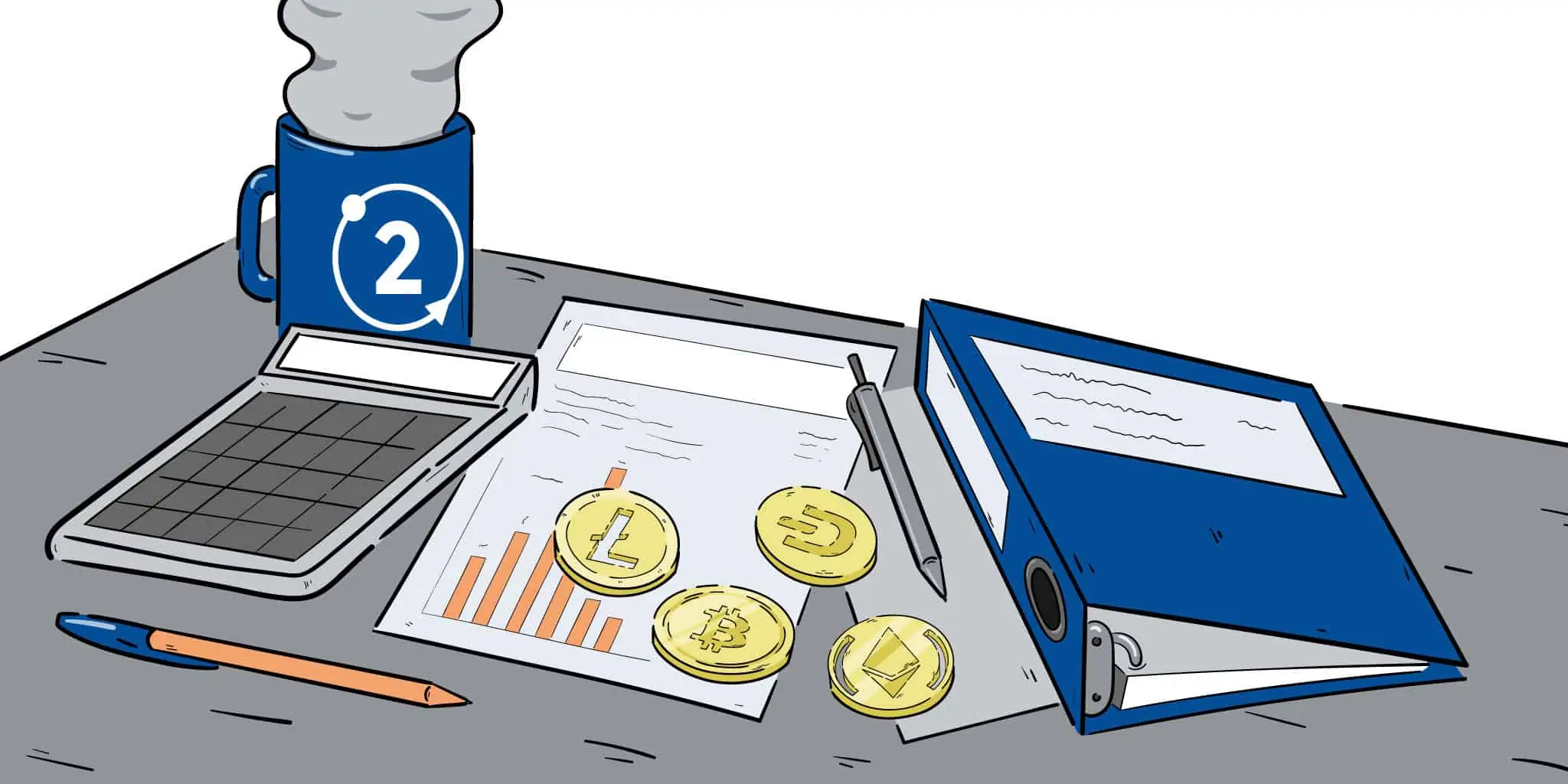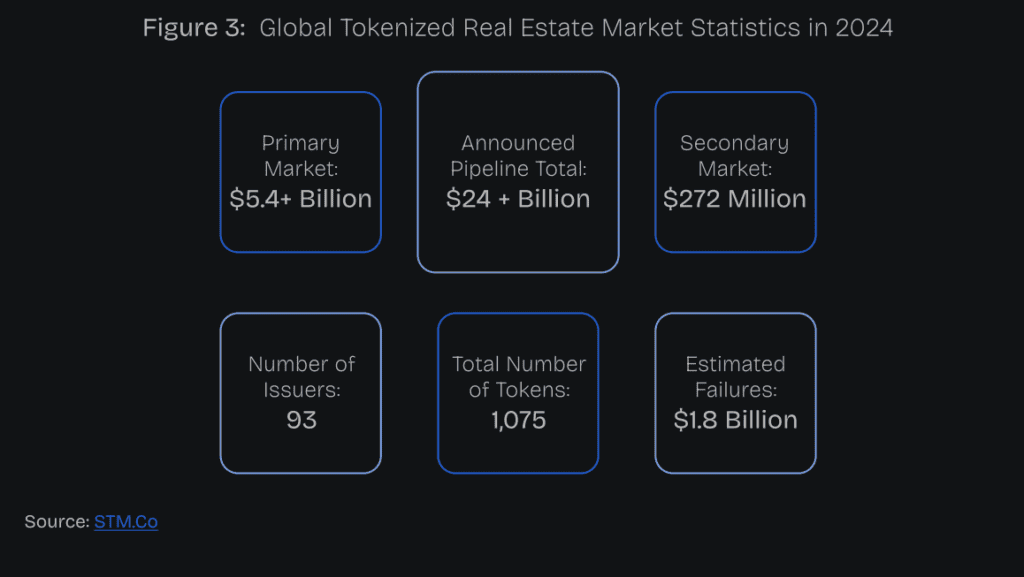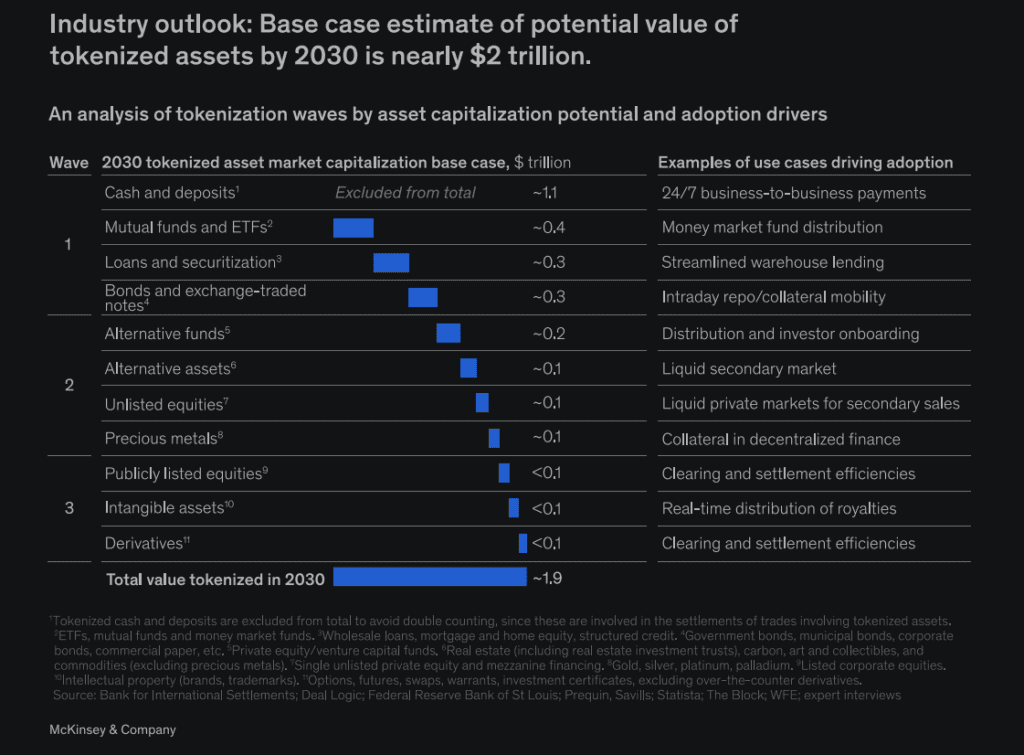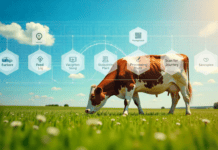
A new report from Brickken, STM and Cointelegraph predicts good news for the RWA sector in 2025, with significant growth.
The world of finance is on the verge of a radical transformation, driven by the tokenization of real-world assets (RWA). Imagine a future where tangible assets such as real estate, artwork, and commodities are turned into digital tokens, making them easily accessible, divisible, and liquid.
This is not a distant futuristic concept, but a growing trend that is expected to explode by 2025, according to a recent report from Brickken, STM Cointelegraph, a platform specializing in the tokenization of assets. The estimate is that the numbers will reach 2 trillion dollars by 2030, based on the fact that by 2024, this market will have a size of about 5,4 billion dollars.
This makes it clear that real-world asset (RWA) tokenization represents an innovative convergence between traditional finance and blockchain technology. Physical and financial assets, once limited by bureaucratic processes and access barriers, can now be transformed into digital tokens. A conversion that not only simplifies ownership and transfer, but also opens up new avenues for investment and asset management. In the context of rapid technological advancement, RWA tokenization is presented as a transformative solution that could redefine the global financial landscape.
RWA Tokenization and its Revolution in Traditional Finance
La tokenization of real-world assets (RWA) RWA is creating a seismic shift in the way we interact with traditional finance, as it enables the digital representation of physical and intangible assets on a blockchain. This process transforms ownership into digital tokens, facilitating efficient transfer, fractionation, and management within a decentralized network. The potential of RWA tokenization extends across multiple industries, offering greater liquidity, accessibility, and transparency.
BUY BITCOINConsider the example of real estate. Traditionally, buying and selling property involves a lengthy and costly bureaucratic process, with middlemen, paperwork, and long waiting times. With tokenization, property can be divided into thousands or even millions of tokens, allowing investors to purchase fractions of the property through a digital platform. This democratizes access to real estate investments, opening opportunities to a wider audience and lowering barriers to entry.
Expansion of the RWA tokenization model
But beyond real estate, tokenization can be applied to a wide range of assets, including artwork, bonds, stocks, commodities, and even intellectual property. Tokenization makes it easier to create new financial products and optimize existing ones. For example, a company could tokenize its stock to access capital faster and at a lower cost than through a traditional initial public offering (IPO).
At its core, the importance of tokenization lies in its ability to reshape the way we operate and interact with assets. By making them more accessible, more liquid, transparent and efficient, tokenization has the potential to unlock significant value and drive innovation across the financial sector. As more industries adopt blockchain technology and the resulting advantages of tokenization, we are bound to witness unprecedented growth and transformation in the way conventional assets are managed and traded.

Course on Taxation of Bitcoin and other Cryptocurrencies in Spain (only in Spanish)
Medium levelLearn from experts in the Tax area all the details about the taxation of cryptocurrencies in Spain.
Brickken Report: An optimistic outlook for the RWA sector in 2025
The report of Brickken stands out as a key reference for understanding the dynamics and projections of the RWA sector. Its findings paint an optimistic picture for 2025, anticipating significant growth driven by several factors, including the growing adoption of blockchain technology, the search for new sources of yield in a low interest rate environment, and increasing regulatory clarity in some jurisdictions.

The report projects that asset tokenization could reach a remarkable multi-trillion-dollar market capitalization by 2025. This substantial growth is largely attributed to the tokenization of previously illiquid assets such as real estate, private debt, and private equity.
These assets represent a large portion of the world’s wealth, but have historically had restricted access due to their illiquid nature and significant barriers to entry. Tokenizing these assets not only unlocks their inherent liquidity, but also presents new investment opportunities to a broader audience.
Stablecoins the big beneficiaries
Brickken’s report emphasizes the pivotal role stablecoins play in the Real World Asset (RWA) ecosystem. Stablecoins offer a stable and efficient means for value transfer within blockchain technology, thus streamlining trading and investment in tokenized assets.
Stablecoin adoption is expected to see a substantial increase in the coming years as more investors and businesses become familiar with the numerous benefits they offer. This growing acceptance of stablecoins is becoming a major driver of the growth and stability of the RWA market.
Furthermore, the report emphasizes the importance of a robust technological infrastructure to sustain the expansion of the RWA sector. Platforms such as Brickken that streamline the issuance, management, and trading of tokenized assets will become instrumental in scaling the sector and attracting institutional investors. Interoperability between different blockchains and protocols is essential to establishing liquidity and market efficiency. By addressing these infrastructure needs, the RWA sector can position itself for sustainable growth and mainstream adoption.

Regulation will be essential
Brickken’s analysis further highlights that regulation will play a pivotal role in shaping the trajectory of the RWA sector. Clear regulatory frameworks will foster investor confidence and facilitate institutional adoption, while the absence of well-defined guidelines may hamper growth and introduce uncertainty.
The report advocates a well-reasoned regulatory approach that effectively protects investors without stifling innovation. Achieving this delicate regulatory balance is essential to fostering sustainable and responsible development of the RWA sector.
BUY BITCOINGreater liquidity and institutional adoption
The growing prominence of the Real World Asset (RWA) sector will have a substantial impact on the crypto ecosystem, reshaping the use and perception of cryptocurrencies. One of the most significant consequences will be a noticeable boost in market liquidity. By tokenizing illiquid assets, such as real estate and artwork, a more accessible and efficient market is established, allowing investors to buy and sell fractions of assets with relative ease.
This increased liquidity has the potential to attract new entrants to the crypto market, including institutional investors who have historically shied away from digital assets due to their volatility and lack of regulatory clarity. By tokenizing real-world assets (RWA), these investors can gain exposure to the crypto market using familiar assets backed by tangible value.
Institutional adoption of the RWA sector will also drive innovation in the crypto ecosystem. Traditional financial institutions will contribute their expertise and resources to the development of new products.
Investing in cryptoassets is not fully regulated, may not be suitable for retail investors due to high volatility and there is a risk of losing all invested amounts.



